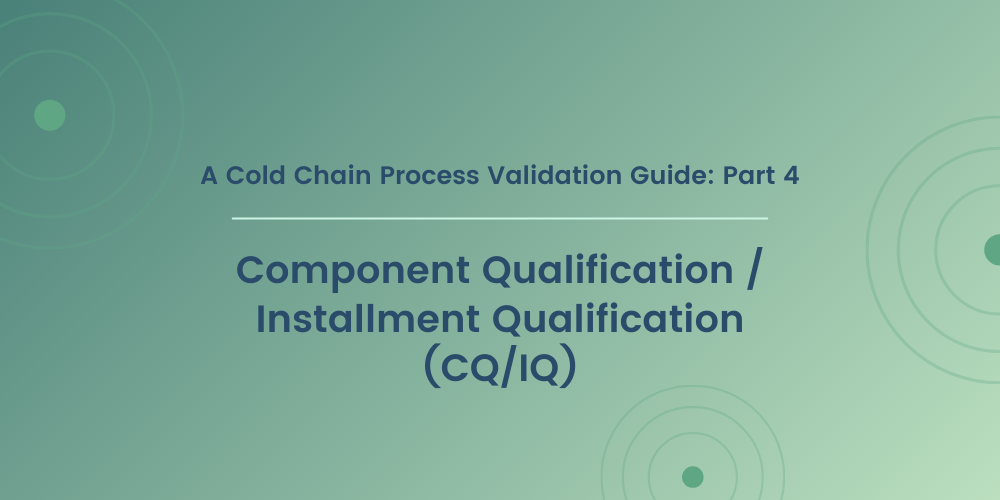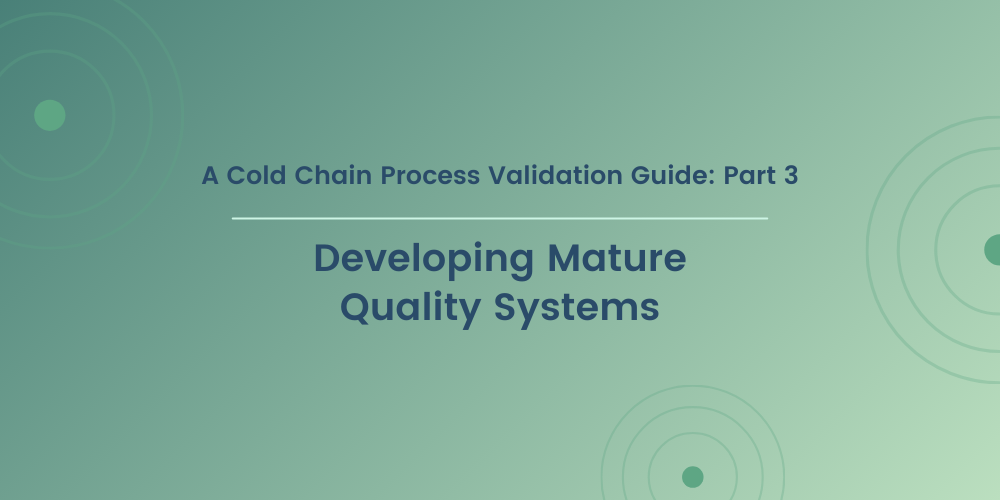A Cold Chain Process Validation Guide: Part 4: Component Qualification / Installment Qualification (CQ/IQ)
Robust test standards and test methods must be in place in your quality management...
read Details

In today’s blog post, we will explore how heat transfer concepts can be applied to evaluate pre-qualified shippers. This presentation was originally delivered by Carson Dickey, an engineering manager at Modality Solutions, during the 2023 ISTA TempPack Forum held in Houston, Texas. As part of his presentation, Carson covers Pre-Qualified Thermal Packaging’s role in the cold chain strategy, how to evaluate vendor thermal OQs, applying heat transfer principles, and illustrating thermal profile adjustments.
>> Download the Slide Deck from our LinkedIn Group
Thermal packaging systems play a critical role in maintaining specific temperature conditions during the distribution of biopharmaceutical products. To ensure the reliability of these systems, they undergo thermal operational qualification (OQ) tests. Many thermal packaging vendors conduct their own OQ tests, which can then be leveraged by drug developers to reduce testing costs and implementation time. However, these vendor-conducted OQs may not always align perfectly with the drug developer’s specific use case.
When evaluating a vendor’s thermal OQ, you should consider that these OQs are typically conducted in a generic manner to ensure that testing applies across most use cases. They commonly consist of small minimum loads, large maximum loads, and the use of industry-standard profiles (ISTA 7E and 7D). These vendor test parameters do not always cover the drug developer’s use case. In that case, heat transfer and thermodynamics principles can be used to estimate thermal packaging performance with various payloads and thermal profiles. (FYI – these techniques have been included in recent regulatory filings and have been accepted by regulatory agencies both in the US, and abroad.)
If the vendor OQ was conducted using a thermal profile that is not representative of the drug developer’s shipping lane, you need to determine how the system would perform under a different thermal profile.
Applying Heat Transfer Principles: To address any discrepancies between the vendor’s thermal OQ and the drug developer’s use case, heat transfer and thermodynamic principles can be applied. These techniques have gained acceptance by regulatory agencies both in the US and abroad. One area where these principles prove valuable is in adjusting thermal profiles. By utilizing formulas based on Newton’s law and Fourier’s law, one can estimate the thermal packaging performance under different thermal profiles. This adjustment enables drug developers to evaluate how the shipping system would perform under their desired conditions, even if the vendor’s OQ used a different profile. (Check out the Slide Deck from Carson’s presentation to get the details on the equations.)
(Example – Thermal Profile Adjustment) To illustrate this process, let’s consider an example. Suppose a thermal shipper, intended to maintain product temperatures between 2 – 8 °C, was tested against a non-industry standard severe hot thermal profile. The results showed the shipper maintains temperatures between two to eight degrees Celsius for 17 hours. However, the drug developer believes that a milder profile is a better representation of the shipping lane. So, what is the performance of the shipping lane against the milder profile?
By adjusting the thermal profile and using steady-state heat transfer equations, it is possible to estimate the performance of the shipping system under the new profile. This adjustment can extend the qualified duration, providing valuable insights for implementation. See Carson work out this example in part of the presentation below:
Accounting for Thermal Mass Adjustments: Another important factor to consider is how different minimum or maximum payloads affect the qualified duration of thermal packaging systems.
The energy required to raise or lower the payload temperature within the system is calculated using the specific heat formula. By comparing the energy values for different payloads, drug developers can determine the impact of varying thermal mass on system performance. This analysis allows for adjustments to qualified durations and helps optimize the use of thermal shippers based on specific payload masses. (Check out the Slide Deck from Carson’s presentation to get the details on the equations.)
(Example – Thermal Mass Adjustment) To illustrate this process, let’s consider an example. Suppose a thermal shipper, intended to maintain product temperatures between 2 – 8 °C, uses 5kg of frozen gel packs preconditioned to -20°C, and 4kg of refrigerated gel packs preconditioned to 5°C. The thermal OQ study used 5kg of product mass, but the drug developer is only using 1kg of product mass for minimum load shipments. How does this reduction in thermal mass impact the performance?
Applying heat transfer concepts to evaluate pre-qualified shippers is an essential practice in the biopharmaceutical industry. Using prequalified thermal packaging systems reduces implementation time and reduces costs by avoiding redundant thermal OQ testing. Even if the vendor test parameters are not exactly how you plan to use the thermal shipper, heat transfer and thermodynamic principles can be applied to estimate thermal packaging performance with different thermal profiles and payloads. It’s still important to evaluate other aspects of a thermal OQ (packout procedures, monitoring locations, preconditioning procedures) against ISTA standard 20 to ensure the vendor study was conducted using industry best practices.
Of course, Modality Solutions’ engineering experts perform and apply these equations every day. If you want to leave the cold chain evaluation to our cold chain experts, you can do that by contacting us using the form below:
Robust test standards and test methods must be in place in your quality management...
read Details
Developing mature quality systems is one of the biggest challenges and one of the...
read Details
Are you aware of the open data files published online by the FDA? This...
read Details